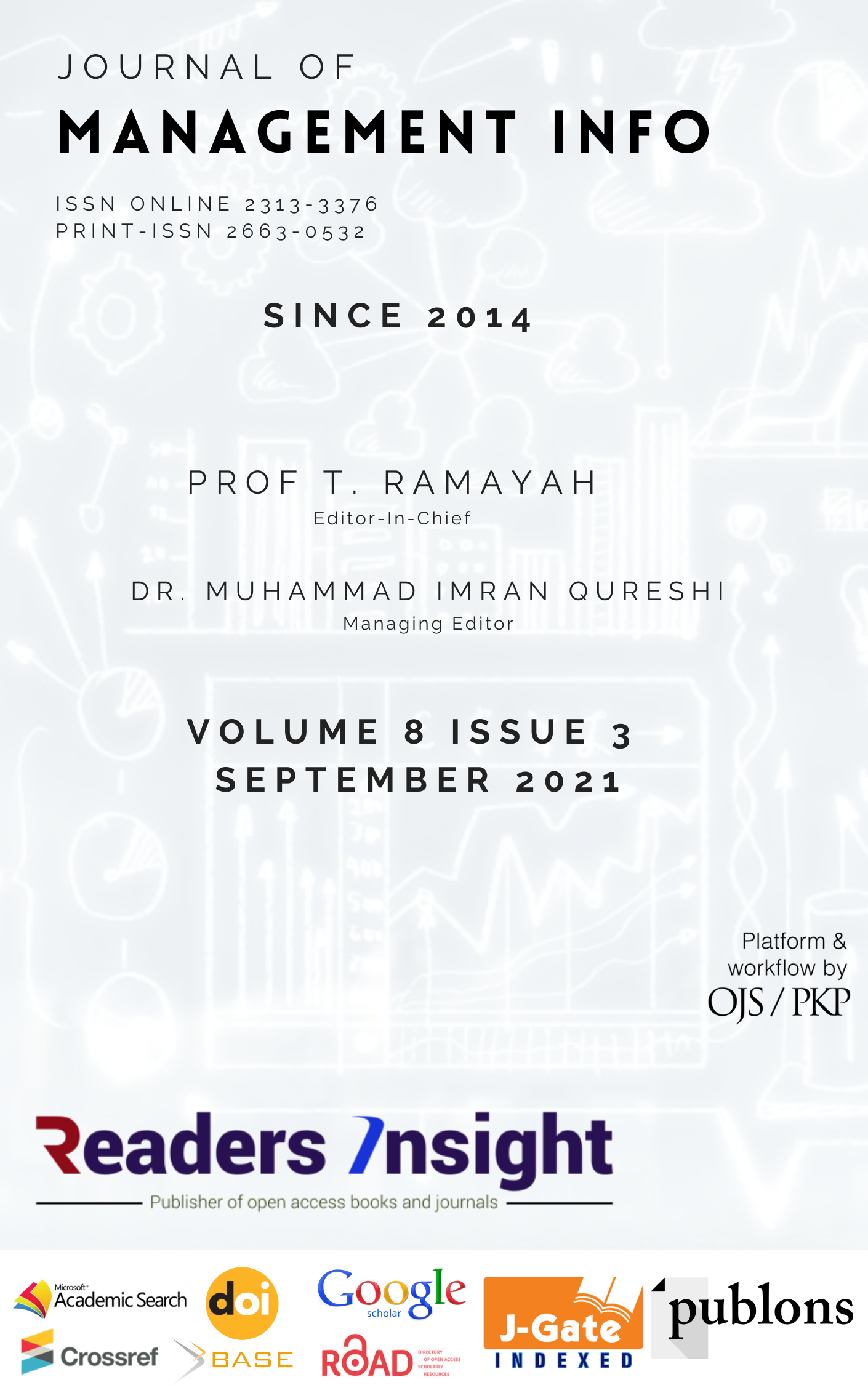Influence of absorptive capability on organizational performance of tier two commercial banks in Kenya
Main Article Content
Abstract
Firms that clearly understand their mandate are more easily able to understand their customers and hence are in a better position to create products that correctly fit in with the market needs and withstand competition. Most firms in the same industry operate under similar environments, however, the ability of a firm to understand its surroundings and take up the opportunities around it and at the same time minimize its threats within certain acceptable time limits, brings out to a large extent the difference between performance of one firm and the other in a similar industry. This study was anchored on the competitive theory as advanced by Michael Porter. A descriptive approach was used by explaining the data and characteristics of the population being studied. The study targeted a total of 64 respondents. This study did not sample the tier two commercial banks because they are few and hence a census was adopted. A pilot test on 8 employees was consequently carried out before this study. The respondents agreed that tier two banks strive to be competitive in the market and employees are encouraged to implement new ideas. The study concluded that absorptive capability has a significant contribution to performance of tier two banks. The study also recommended that banks should enhance customer retention to build their customer base.
Downloads
Article Details
Section

This work is licensed under a Creative Commons Attribution 4.0 International License.
Authors who publish in this journal agree to the following terms:
- Authors retain copyright and grant the journal the right of first publication, with the work simultaneously licensed under a Creative Commons Attribution License that allows others to share the work with an acknowledgment of the work's authorship and initial publication in this journal.
- Authors are able to enter into separate, additional contractual arrangements for the non-exclusive distribution of the journal's published version of the work (e.g., post it to an institutional repository or publish it in a book), with an acknowledgement of its initial publication in this journal.
- Authors are permitted and encouraged to post their work online (e.g., in institutional repositories or on their website) prior to and during the submission process, as it can lead to productive exchanges, as well as earlier and greater citation of published work (see The Effect of Open Access).
How to Cite
References
Ali, Q., Salman, A., Yaacob, H., & Parveen, S. (2019). Financial cost and social influence: Factors affecting the adoption of halal cosmetics in Malaysia. Academy of Entrepreneurship Journal, 25(2), 1-17.
Ali, Q., Parveen, S., Senin, A. A., & Zaini, M. Z. (2020). Islamic bankers' green behaviour for the growth of green banking in Malaysia. International Journal of Environment and Sustainable Development, 19(4), 393-411. http://dx.doi.org/10.1504/IJESD.2020.110650 DOI: https://doi.org/10.1504/IJESD.2020.110650
Awuah, K. G. B., Hammond, F. N., Lamond, J. E., & Booth, C. (2014). Benefits of urban land use planning in Ghana. Geoforum, 51, 37-46. https://doi.org/10.1016/j.geoforum.2013.09.019 DOI: https://doi.org/10.1016/j.geoforum.2013.09.019
Brace, A. B. (2013). Handbook of survey research. Academic Press.
Cameron, K. S., & Quinn, R. E. (2011). Diagnosing and changing organizational culture: Based on the competing values framework. John Wiley & Sons.
Central Bank of Kenya (CBK). (2018). Annual report. Nairobi: Central Bank of Kenya.
Christensen, L. B., Johnson, R. B., Turner, L. A., & Christensen, L. B. (2011). Research methods, design, and analysis.
Cohen, W. M., & Levinthal, D. A. (1990). Absorptive capacity: A new perspective on learning and innovation. Administrative science quarterly, 128-152. https://doi.org/10.2307/2393553 DOI: https://doi.org/10.2307/2393553
Dosi, G., Nelson, R. R. & Winter, S. G. (Eds.). (2000). The nature and dynamics of organizational capabilities. Oxford university press. https://doi.org/10.1093/0199248540.001.0001 DOI: https://doi.org/10.1093/0199248540.003.0001
Kraaijenbrink, J., & Spender, J-C. (2011). Theories of the Firm and their Value Creation Assumptions. Paper presented at 31st Strategic Management Society (SMS) Annual International Conference 2011, Miami, United States.
Mugenda, O. M. & Mugenda, A. G. (2003). Research methods quantitative and quantitative approaches. Nairobi: Act Press
Parveen, S., Senin, A. A. & Umar, A. (2015). Organization culture and open innovation: A quadruple helix open innovation model approach. International Journal of Economics and Financial Issues, 5(1S).335-342. https://www.econjournals.com/index.php/ijefi/article/view/1399
Porter, M. E. (1980). Competitive strategy: Techniques for analyzing industries and competitors. Simon and Schuster.
Qureshi, M. I., Parveen, S., Abdullah, I., & Dana, L. P. (2020). Reconceptualizing the interventions of open innovation systems between the nexus of quadruple organization cultural dynamics and performance. Quality & Quantity, 55, 1661-1681. https://doi.org/10.1007/s11135-020-01078-3 DOI: https://doi.org/10.1007/s11135-020-01078-3
Saunders, M., Lewis, P., & Thornhill, A. (2009). Research methods for business students. Pearson education.
Schilke, O. (2014). On the contingent value of dynamic capabilities for competitive advantage: The nonlinear moderating effect of environmental dynamism. Strategic management journal, 35(2), 179-203. https://doi.org/10.1002/smj.2099 DOI: https://doi.org/10.1002/smj.2099
Sullivan, G. M. (2011). A primer on the validity of assessment instruments, Journal of graduate medical education, 3(2), 119-120. https://doi.org/10.4300/JGME-D-11-00075.1 DOI: https://doi.org/10.4300/JGME-D-11-00075.1
Tarutė, A. & Gatautis, R. (2014). ICT Impact on SMEs Performance, Procedia-Social and Behavioral Sciences, 110(0), 1218-1225. https://doi.org/10.1016/j.sbspro.2013.12.968 DOI: https://doi.org/10.1016/j.sbspro.2013.12.968
Waemustafa, W., & Sukri, S. (2015). Bank specific and macroeconomics dynamic determinants of credit risk in Islamic banks and conventional banks. International Journal of Economics and Financial Issues,5(2),476-481.
Woiceshyn, J. & Daellenbach, U. (2005). Integrative capability and technology adoption: evidence from oil firms. Industrial and Corporate Change, 14(2), 307-342. https://doi.org/10.1093/icc/dth053 DOI: https://doi.org/10.1093/icc/dth053
